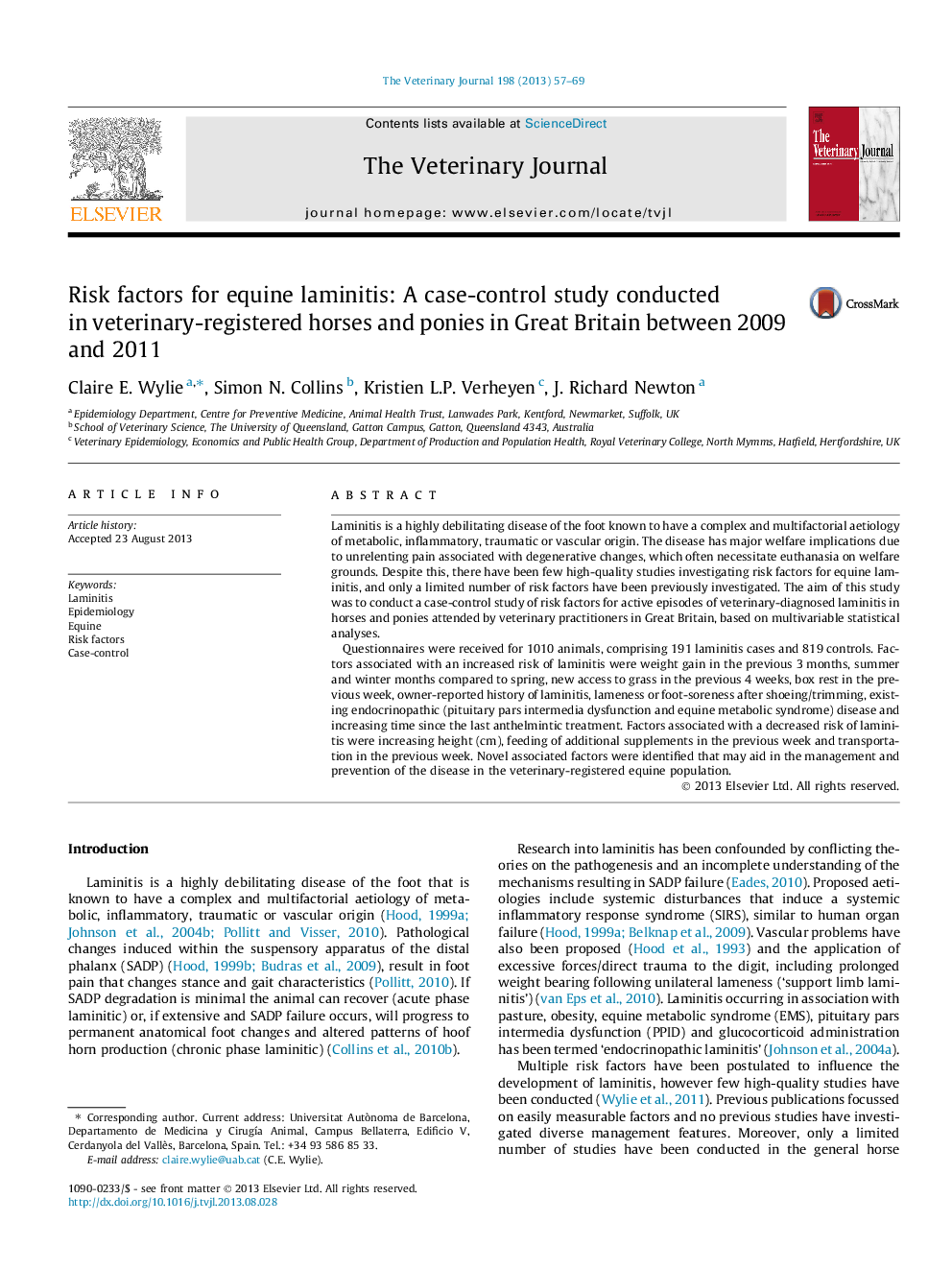| Article ID | Journal | Published Year | Pages | File Type |
|---|---|---|---|---|
| 5798433 | The Veterinary Journal | 2013 | 13 Pages |
Laminitis is a highly debilitating disease of the foot known to have a complex and multifactorial aetiology of metabolic, inflammatory, traumatic or vascular origin. The disease has major welfare implications due to unrelenting pain associated with degenerative changes, which often necessitate euthanasia on welfare grounds. Despite this, there have been few high-quality studies investigating risk factors for equine laminitis, and only a limited number of risk factors have been previously investigated. The aim of this study was to conduct a case-control study of risk factors for active episodes of veterinary-diagnosed laminitis in horses and ponies attended by veterinary practitioners in Great Britain, based on multivariable statistical analyses.Questionnaires were received for 1010 animals, comprising 191 laminitis cases and 819 controls. Factors associated with an increased risk of laminitis were weight gain in the previous 3Â months, summer and winter months compared to spring, new access to grass in the previous 4Â weeks, box rest in the previous week, owner-reported history of laminitis, lameness or foot-soreness after shoeing/trimming, existing endocrinopathic (pituitary pars intermedia dysfunction and equine metabolic syndrome) disease and increasing time since the last anthelmintic treatment. Factors associated with a decreased risk of laminitis were increasing height (cm), feeding of additional supplements in the previous week and transportation in the previous week. Novel associated factors were identified that may aid in the management and prevention of the disease in the veterinary-registered equine population.
